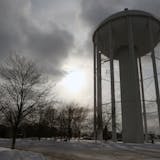When I opened my paper Wednesday and saw the stunning photo of the new U.S. Bank Stadium on the front page, I was struck by the building's large scale and unusual shape — almost like one of the new stealth ships being built for the U.S. Navy — but also because the entire downtown Minneapolis skyline was reflected in its side. The total area of glass being used for the stadium is more than 10 acres. For many, the stadium is a thing of beauty, but for me, I see a killing machine for songbirds. Despite the efforts of many conservation groups to get bird-safe glass installed, the owners refused, citing the cost. Large volumes of bird strikes will occur, especially during the spring migration. The U.S. Fish and Wildlife Service should be called upon to investigate whether the owners violated the Migratory Bird Treaty Act, which makes it unlawful for anyone in the U.S. to "take" (i.e., kill) a migratory bird. I encourage anyone witnessing the deaths of large numbers of birds to send photos documenting these kills to the Twin Cities Field Office at TwinCities@fws.gov. Then it becomes the responsibility of the service to enforce the act.
R. Nicholas Rowse, Burnsville
The writer is a retired fish and wildlife biologist.
TRANSPORTATION POLICY
Discussing an overall balance — and I-35W, 3rd Av. specifically
The April 11 commentary by the Blue Earth and Ramsey County commissioners arguing for a comprehensive transportation funding package was absolutely correct. The only shortfall was that while it argued for funding for "roads, bridges and transit," no mention was made of pedestrian and bicycle infrastructure.
Yes, Minnesota must rebuild its roads and bridges and modernize its transit system. But it also needs to improve and expand its pedestrian and bicycle infrastructure. More Minnesotans are walking and biking, and are demanding better crosswalks, lighting, sidewalks and safer bicycle routes.
That growing demand is evident by the backlog of pedestrian and bicycle infrastructure projects in the state. An analysis of existing Minnesota city and county pedestrian and bicycle infrastructure requests found $1.3 billion in unmet needs for sidewalks, safer intersections and bike routes. The Minnesota Department of Transportation has estimated that it will have only half the revenue needed for pedestrian and bicycle investments in the state's trunk highway corridors.
The commentary cited fatalities on rural roads as a reason for comprehensive funding. Here's an argument for including pedestrian and bicycle infrastructure in that funding package: In 2013, 11 percent of traffic fatalities in Minnesota involved people who were walking or bicycling, and more than 1,680 pedestrians and bicyclists were injured.
If the Legislature passes a comprehensive transportation infrastructure funding bill (which it should), it cannot leave the needs of pedestrians and bicyclists — including children and seniors — behind. The needs are too vast and the safety impacts of such an omission would be too great.
Ardell Brede, mayor, Rochester; Mary Hamann-Roland, mayor, Apple Valley, and Hank Ludtke, mayor, Frazee, Minn.
The authors are co-chairs of the Minnesota Mayoral Active Transportation Caucus.
• • •


